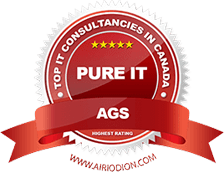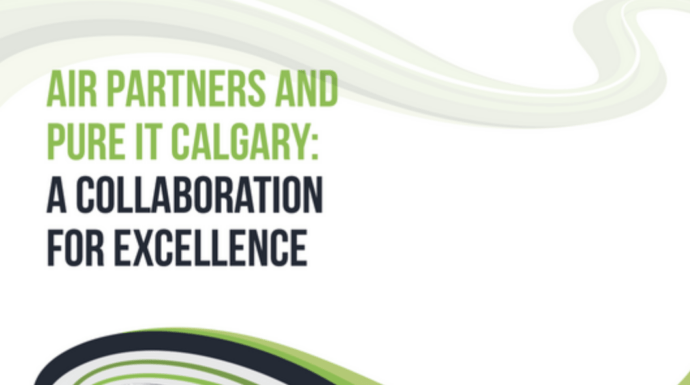Is Your Calgary Managed Services Provider On The Ball? 5 Signs You’re Not Getting What You Need
Choosing a managed services provider (MSP) in Calgary is critical for your organization’s IT infrastructure and overall success. While many MSPs claim to offer comprehensive solutions, not all deliver on their promises. A subpar MSP can hinder your business growth, compromise security, and lead to inefficient IT operations.
Are you confident that your current Calgary MSP meets your organization’s needs? It’s essential to regularly evaluate your provider’s performance and ensure they’re keeping pace with evolving technology trends and your business requirements. Many companies are stuck with inadequate IT support without realizing the impact on their operations and bottom line.
Recognizing the signs of an underperforming MSP is crucial for maintaining your competitive edge. From lackluster cybersecurity measures to poor response times, these indicators can serve as red flags that it’s time to reassess your IT partnership. By understanding what to look for, you can make informed decisions about your technology support and potentially unlock new opportunities for growth and efficiency.
Key Takeaways
- Regular evaluation of your MSP’s performance is crucial for maintaining effective IT operations.
- Subpar IT support can significantly impact your business growth and security.
- Choosing the right MSP is essential for aligning technology with your business goals.
Evaluating Your Calgary Managed Services Provider
Regular evaluation of your managed services provider is crucial to ensuring they meet your organization’s evolving IT needs. This process involves examining service agreements, technical capabilities, and the range of services offered.
Understanding Service Level Agreements
Service Level Agreements (SLAs) form the foundation of your relationship with a managed services provider. Review your SLA carefully to ensure it aligns with your business requirements.
Key elements to look for include:
- Response times for different issue priorities
- Uptime guarantees for critical systems
- Clearly defined escalation procedures
- Metrics for measuring service quality
Compare the promised service levels with actual performance. If your provider consistently falls short, it may be time to reassess the partnership.
Assessing Technical Expertise
Your managed services provider should have the technical skills to handle your IT infrastructure effectively. Evaluate their expertise by:
- Reviewing certifications held by their staff
- Examining case studies of similar projects
- Assessing their familiarity with your specific technologies
Ask for examples of how they’ve solved complex technical issues for other clients. A competent provider will demonstrate a deep understanding of current IT trends and emerging technologies relevant to your industry.
Determining the Range of Managed IT Services
A comprehensive managed services provider should offer various IT solutions to meet your diverse needs. Consider whether your provider offers:
- Network monitoring and management
- Data backup and disaster recovery
- Cybersecurity services
- Cloud computing solutions
- Help desk support
Assess if the services align with your business goals and IT strategy. Having a provider that can scale its offerings as your organization grows is invaluable. If you find gaps in their service portfolio, discuss the possibility of expanding their offerings or consider looking for a more comprehensive provider.

Signs of Subpar IT Support
Recognizing inferior IT support is crucial for maintaining your organization’s efficiency and security. Watch out for these key indicators that your managed services provider may not meet your needs.
Delayed Response Times
You contact your IT support team with an urgent issue, but hours pass without a response. This is a major red flag. Top-tier providers offer rapid response times for critical issues, typically within 15-30 minutes.
Slow response times can lead to prolonged downtime, lost productivity, and frustrated employees. Your provider should have clear service level agreements (SLAs) outlining expected response times for different issue severities.
If you frequently wait hours or even days for responses, it’s time to reassess your provider’s capabilities.
Ineffective Communication
Your IT provider should keep you informed about the status of ongoing issues and projects. Lack of regular updates or unclear explanations is a sign of poor service.
Quality providers offer:
- Clear, jargon-free explanations
- Regular progress reports
- Proactive notifications about potential issues
If you often feel left in the dark or struggle to understand your provider’s communications, it may indicate a lack of customer focus or expertise.
Lack of Proactive Maintenance
A reactive approach to IT management can leave your systems vulnerable. Top providers implement proactive maintenance strategies to prevent issues before they occur.
Signs of insufficient proactive maintenance include:
- Frequent unexpected downtime
- Recurring issues that aren’t permanently resolved
- Outdated software and security patches
Your provider should regularly perform system health checks, update software, and monitor for potential threats. If you’re constantly dealing with preventable problems, your provider may not be proactive to your IT infrastructure.
The Impact of Inadequate IT Services
Subpar IT services can severely hinder your Calgary organization’s performance and security. These shortcomings manifest in various ways, affecting operations, cybersecurity, and financial stability.
Operational Inefficiencies
Inadequate IT services often lead to workflow disruptions and decreased productivity. Your employees may struggle with outdated software or sluggish systems, hampering their ability to complete tasks efficiently. Compatibility issues between different applications can cause frustrating delays and errors in data processing.
Frequent technical glitches might force your staff to develop time-consuming workarounds, diverting their focus from core business activities. This inefficiency can result in missed deadlines, lower output quality, and diminished customer satisfaction.
Poor IT support response times exacerbate these issues. When technical problems arise, slow resolutions mean extended periods of reduced productivity or complete work stoppages.
Risks to Cybersecurity
Insufficient IT services leave your Calgary business vulnerable to cyber threats. Outdated security protocols and unpatched systems create exploitable weaknesses for cybercriminals.
Without proper encryption and access controls, sensitive data becomes an easy target. Inadequate backup solutions can also put you at risk of permanent data loss in case of ransomware attacks or system failures.
Lack of employee cybersecurity training increases the likelihood of successful phishing attempts and inadvertent data breaches. Without regular security audits and updates, your organization may fail to comply with industry regulations, risking fines and reputational damage.
Downtime Costs and Consequences
Unreliable IT services can lead to frequent system outages and network downtime. These interruptions carry significant financial implications for your Calgary business.
Direct costs include lost productivity, with idle employees unable to perform their duties. Revenue losses mount as customer-facing systems go offline, preventing sales and service delivery.
Prolonged or recurring downtime damages your reputation, potentially leading to customer churn and missed business opportunities. Recovery efforts strain IT resources and may require costly emergency interventions from external specialists.
Inadequate disaster recovery plans extend downtime duration, amplifying these negative impacts. The cumulative effect of repeated outages can severely undermine your organization’s competitiveness and financial health.
Strategic IT Planning and Business Alignment
Strategic IT planning is crucial for aligning technology solutions with your organization’s goals. It helps overcome challenges and positions your business for long-term success.
Long-Term IT Roadmapping
A well-crafted IT roadmap serves as your guide for future technology investments and initiatives. It outlines critical milestones, timelines, and resources to achieve your IT objectives.
Your roadmap should account for emerging technologies that could benefit your business. This might include cloud migration, AI implementation, or cybersecurity enhancements.
Regular reviews and updates of your IT roadmap are essential. As your business evolves, so should your technology strategy.
Consider involving key stakeholders from different departments in the roadmapping process. Their input ensures the plan addresses diverse business needs.
Ensuring Alignment With Business Goals
Your IT strategy must directly support your overall business objectives. This alignment is critical for maximizing the value of your technology investments.
Start by clearly defining your business goals and priorities. Then, identify specific IT initiatives that can help achieve these objectives.
Regular communication between IT and business leaders is vital. It helps ensure ongoing alignment and allows for quick adjustments when needed.
Implement key performance indicators (KPIs) to measure how well your IT initiatives support business goals. These metrics provide tangible evidence of alignment and value creation.
Consider using a balanced scorecard approach to track IT performance across multiple dimensions, including financial impact, customer satisfaction, and operational efficiency.
Optimizing IT Expenditure
Effective IT spending management is crucial for maximizing your organization’s technological investments. Analyzing costs and identifying areas for optimization can significantly improve your bottom line.
Cost-Benefit Analysis of IT Investments
Evaluate your current IT infrastructure and services to determine their actual value. Compare the costs of in-house solutions versus outsourced managed services. Consider hardware expenses, software licenses, maintenance, and labor costs.
Assess the long-term financial impact of IT investments. Look at potential returns regarding improved productivity, reduced downtime, and enhanced security.
Calculate the total cost of ownership for different IT solutions. This includes initial purchase prices, ongoing operational costs, and eventual replacement expenses.
Identifying Areas for Financial Optimization
Review your IT budget line by line to spot unnecessary expenses. Look for redundant services, underutilized software licenses, or outdated equipment that can be phased out.
Consider consolidating vendors to leverage bulk pricing and streamline management. Based on your specific needs and usage patterns, negotiate better rates with your managed services provider.
Explore cloud-based solutions to reduce hardware costs and increase scalability. Implement automation tools to decrease manual labor expenses and improve efficiency.
Audit your IT asset inventory regularly to ensure you’re not paying for unused resources. Align your IT spending with your organization’s strategic goals to maximize value.
Choosing the Right Managed Services Provider
Selecting an appropriate managed services provider (MSP) is crucial for your organization’s IT success. The right partner will align with your business goals and provide reliable, comprehensive support.
Key Criteria for Selection
When evaluating MSPs, consider their service availability. Look for providers offering 24/7 support to ensure your IT infrastructure always remains operational.
Assess the range of services offered. A competent MSP should provide comprehensive solutions, including cybersecurity, cloud management, and IT consulting. This breadth of expertise allows them to address your diverse technological needs.
Examine their methodology and approach to service delivery. An effective MSP will have well-defined processes for issue resolution and proactive maintenance.
Review their track record and client testimonials. This information can give you insights into their reliability and quality of service.
Comparing Local Providers
Research Calgary-based MSPs to find options that understand the local business landscape.
Create a shortlist of potential providers and compare their offerings. Look at pricing structures, service level agreements, and response times.
Consider each provider’s specializations. Some may excel in specific industries or technologies that align with your business needs.
Evaluate their scalability. As your organization grows, your IT requirements will change. Choose an MSP capable of adapting to your evolving needs.
Transitioning to a New Service Provider
Plan the transition carefully to minimize disruption to your operations. Work with your chosen MSP to create a detailed migration plan.
Ensure knowledge transfer from your current IT setup to the new provider. This includes sharing documentation, access credentials, and information about critical systems.
Establish clear communication channels and define roles and responsibilities for your team and the MSP during the transition period.
Set up regular check-ins to monitor progress and address any issues that arise during the migration process.
Looking For A Great IT Company? Pure IT Is The Best Option For Your Calgary Business
Pure IT is a top choice for Calgary businesses seeking comprehensive IT solutions. Their team of certified professionals brings expertise across various technologies and services.
Some critical offerings from Pure IT include:
- Networking
- Managed services
- Cloud backups
- Cybersecurity
Pure IT’s dedication to client success sets them apart. They focus on understanding your specific business requirements to provide tailored solutions.
Their proficiency in Microsoft technologies like Azure, Office 365, and Dynamics 365 can give your organization a competitive edge. This expertise allows them to leverage powerful tools for your benefit.
Pure IT’s fully managed IT services take the burden off your internal team. You can focus on core business activities while they handle your technology needs.
Their local presence in Calgary means they understand the unique challenges and opportunities of the area’s business landscape. This local insight can be invaluable for your organization.
By choosing Pure IT, you gain a partner committed to helping your business thrive through technology. Their comprehensive approach addresses both immediate needs and long-term strategic goals.












